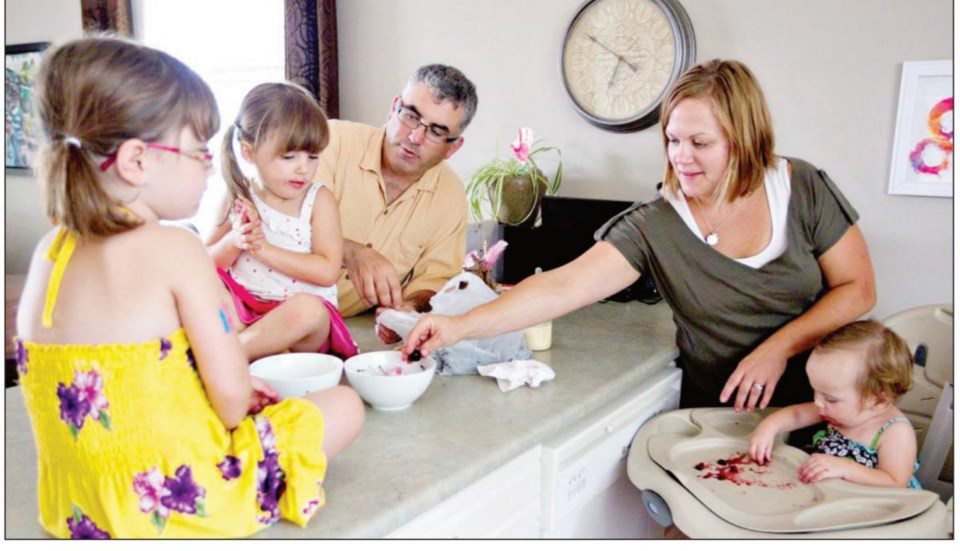When Jody Nickerson got married six years ago, she and her husband knew they wanted to have children and agreed on a magic number.
"We didn't want just one," says the Edmonton high school teacher, now a stay-at-home mom with three little girls. "We just liked the three-kid family - it's a good number."
Census figures from Statistics Canada released earlier this year show the number of Canadian children ages four and under jumped 11 per cent between 2006 and 2011. Although highest in the Prairies - particularly Alberta, with a 20 per cent spike - it marked the first time in 50 years that an increase was recorded in every province and territory.
Statistics Canada attributed the bump to a growing number of women ages 20 to 34 - the preferred age range for child-rearing - as a result of the children of baby boomers having kids of their own.
Still - what's with all the trifectas?
Nickerson and her husband, Rhett, a business manager, both come from three-children families. His sister has three children. So do some of their friends.
"But I don't see it as being this crazy fad or trend that everybody's having three kids," says Nickerson. "I just see it in different places."
Nickerson is quick to note that most parents in her west-end neighbourhood have the typical family of two children. But at the Royal Glenora Club, one of Edmonton's most elite private sports and social clubs, most people she knows have three kids. Some, she says, even have four.
Researchers say they see family sizes growing - likely for economic reasons.
"When families can predict and plan and budget, and they're feeling safe and secure, they tend to have more children," said Nora Spinks, CEO of the Vanier Institute of the Family in Ottawa.
"When you look at uppermiddle class, financially secure couples, there are more of them having three and even four. It used to be really rare to hear three and almost unheard of to have four or more.
"And yet it's coming back again."
Spinks said there's no way to know whether it's just a blip or if the biggerfamily trend is sticking around. Even though she sees families getting larger, she doubts their numbers are large enough to register in next month's census figures.
The next set of 2011 census data is scheduled for release Sept. 19, and will be focused on families, households, marital status and dwellings. It will also include the first-ever detailed look at Canadian stepfamilies and foster children.
Spinks said she does expect to see Canadian households getting bigger - adult children are living at home longer, sometimes after university, and grandparents are moving in with their children to save money or for health-care reasons.
Rod Beaujot, a demographer at the Western University's Centre of Population, Aging and Health in London, Ont., said three-kid families may look like the new norm, but they're not the majority.
"It wouldn't be the first time people have noticed among their friends that a lot of people are having children all of a sudden, or are having a third child - 'Oh, it must be a new trend,' " Beaujot said.
"But when we look at the data more carefully, after we have it all in, we see - it wasn't based on real data."
Although more people may be having three children, still more are choosing to have no children at all, Beaujot said. Overall, two children remains the most popular choice, he said.
But wait. How many children does Beaujot have?
"Three children," he admitted.



